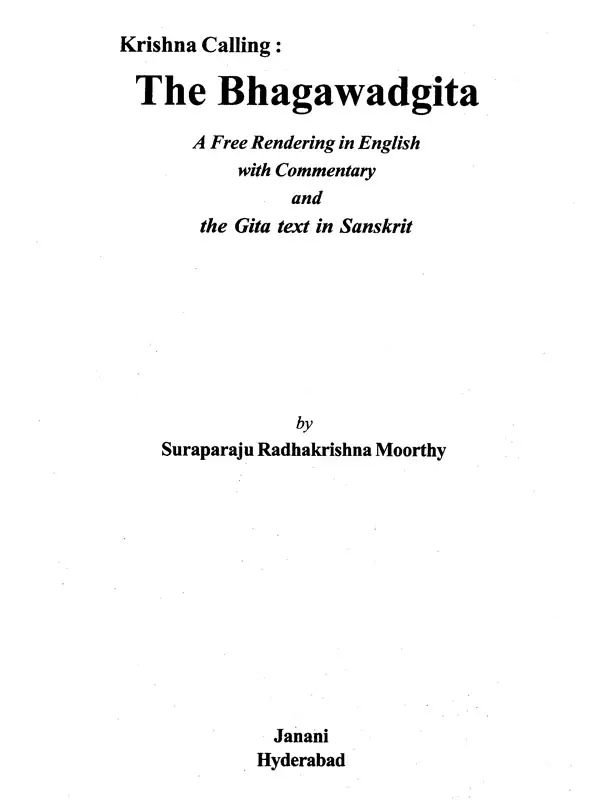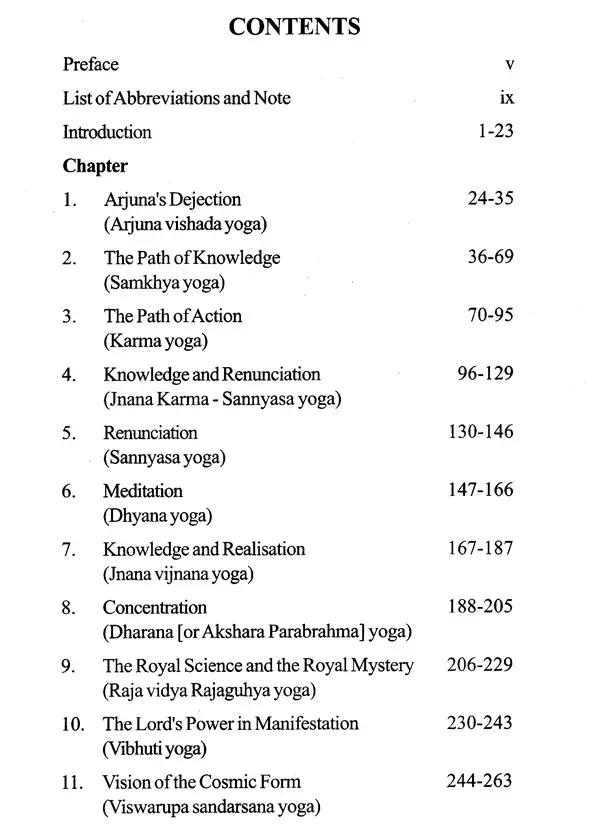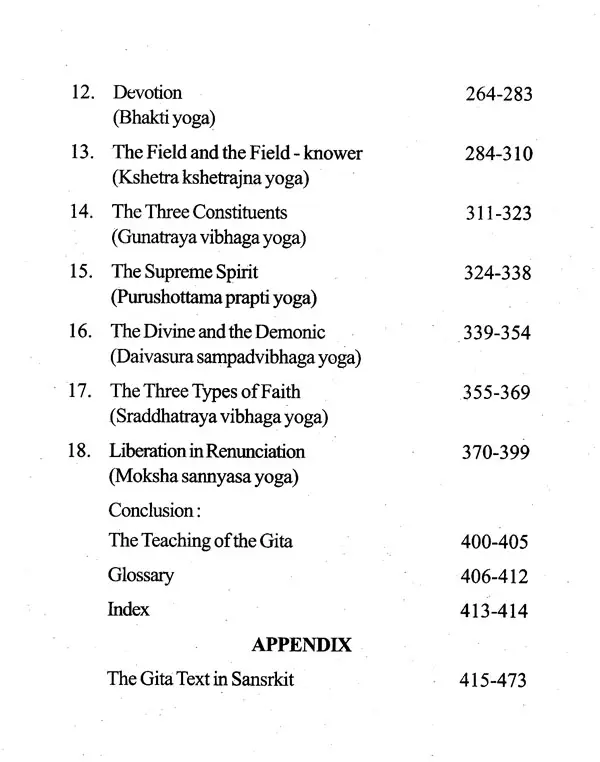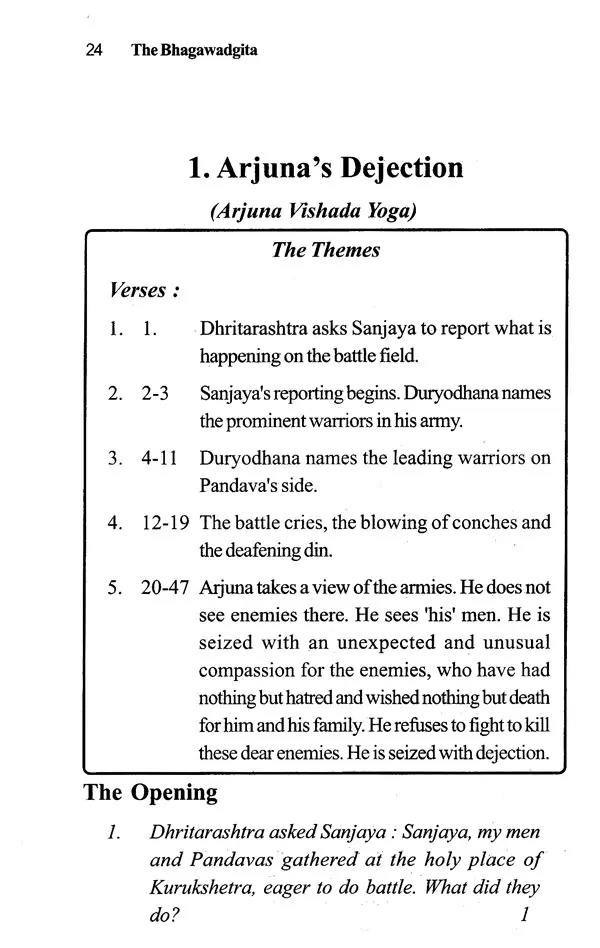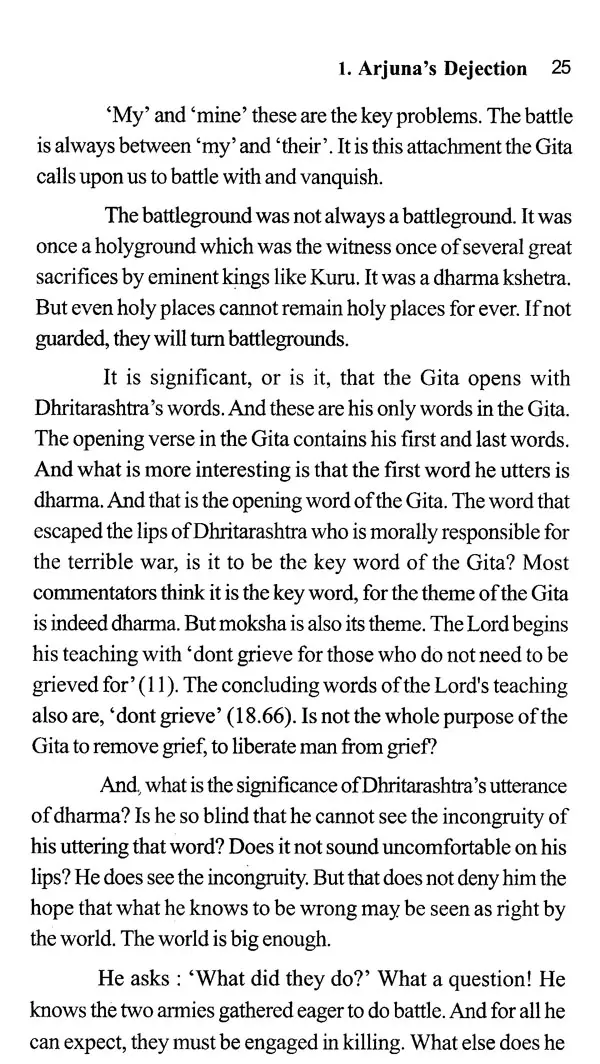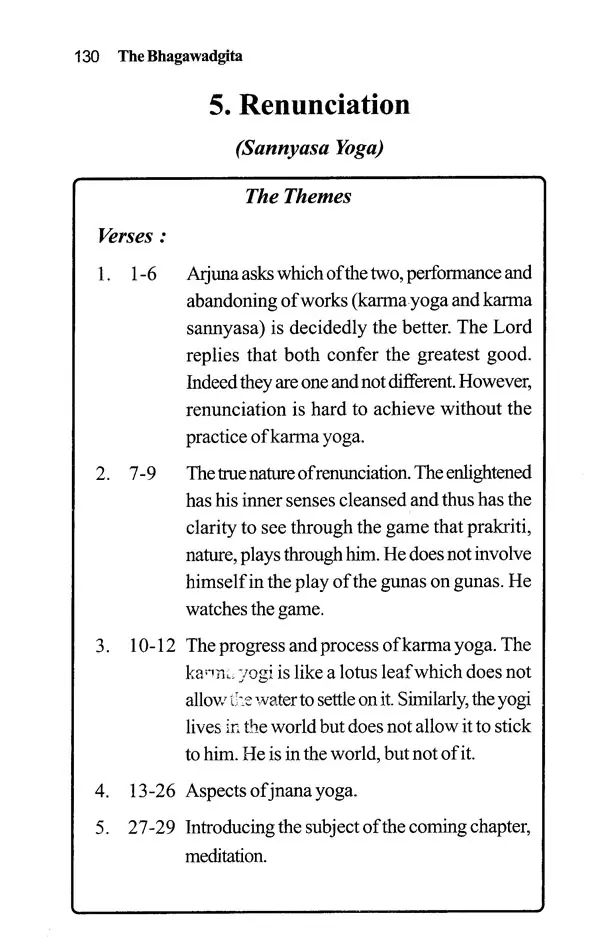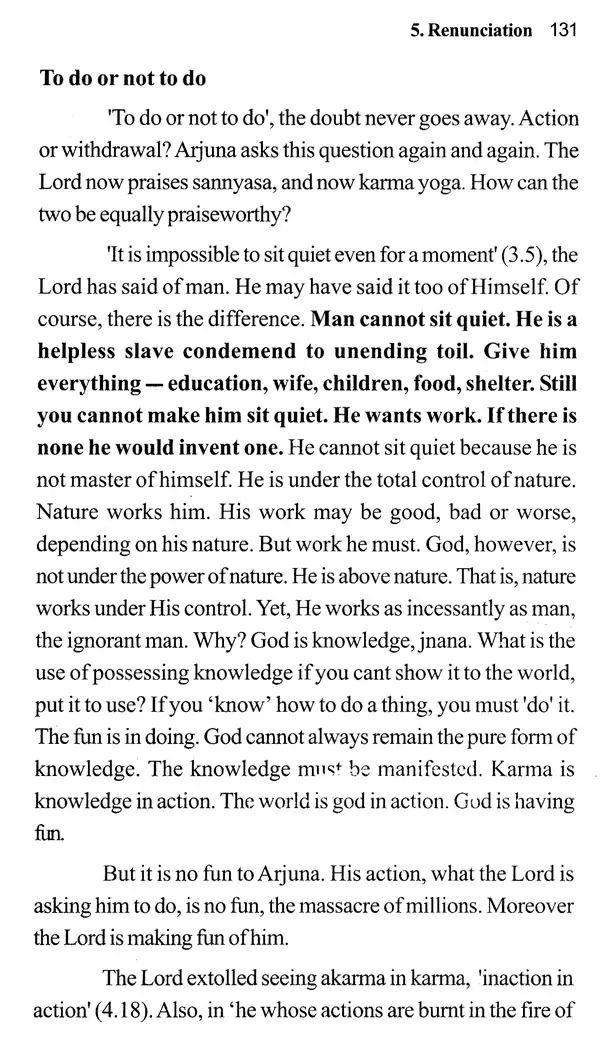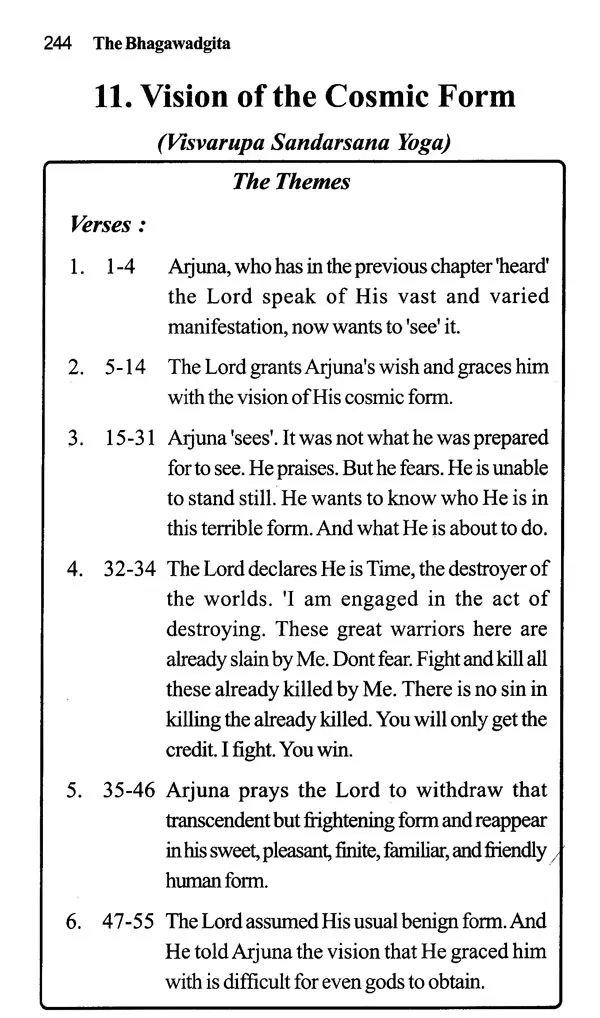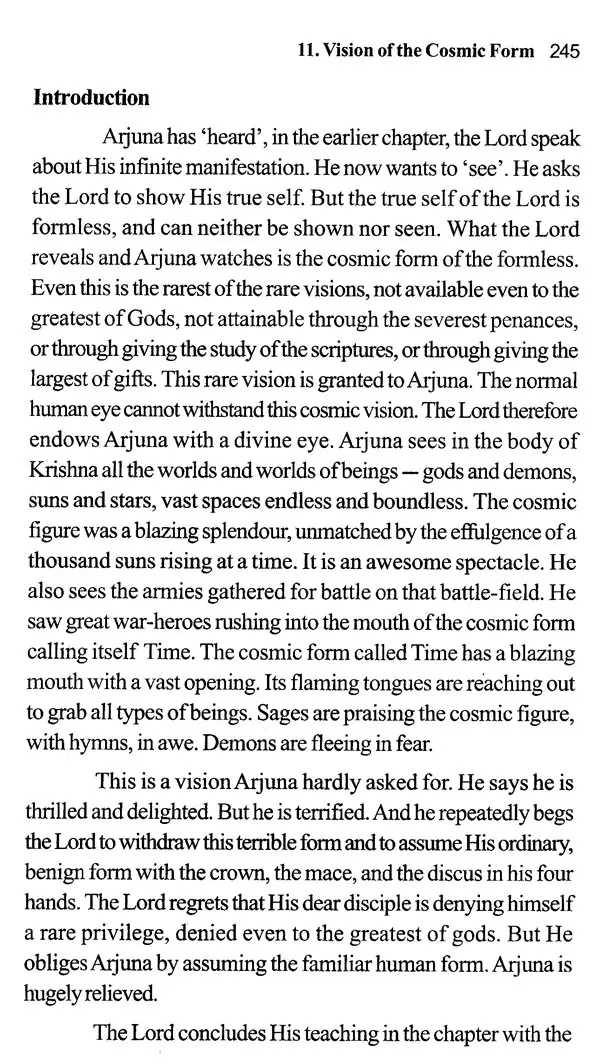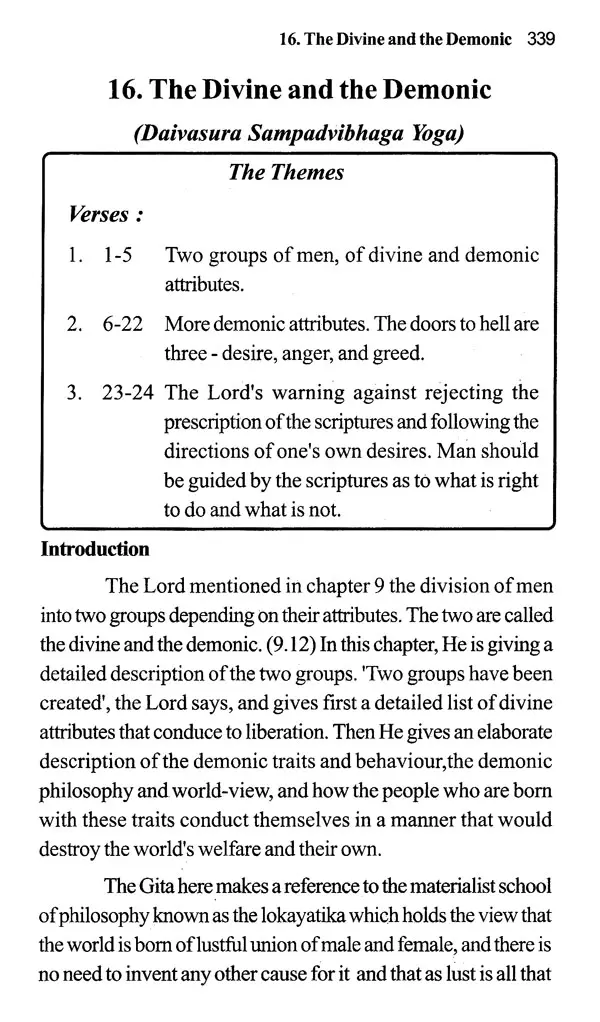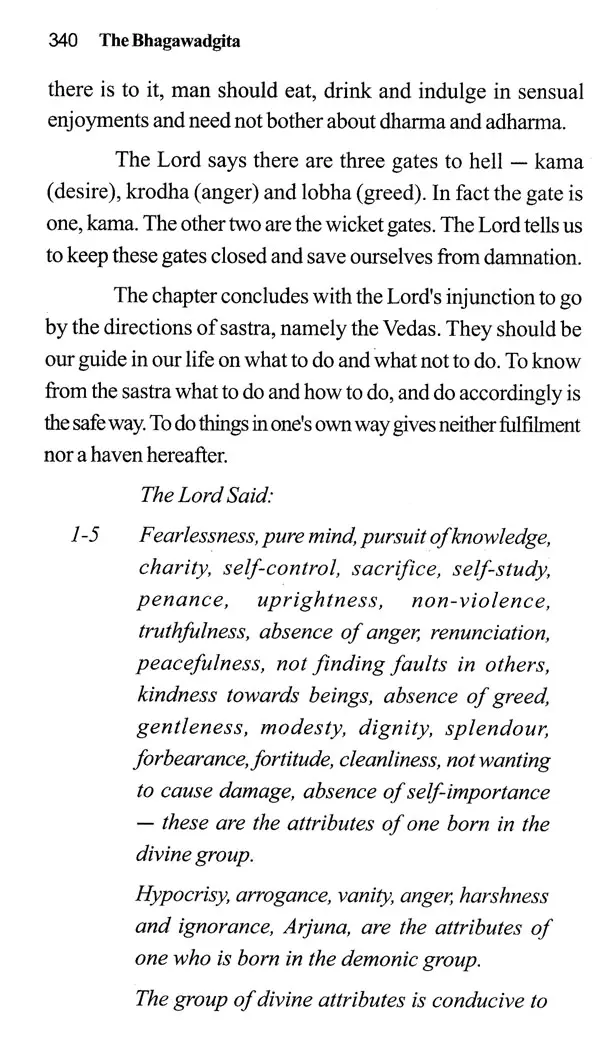
Krishna Calling- The Bhagawadgita (A Free Rendering in English With Commentary and The Gita Text in Sanskrit)
Book Specification
| Item Code: | UAK547 |
| Author: | Suraparaju Radhakrishna Moorthy |
| Publisher: | Ramakrishna Math, Hyderabad |
| Language: | English |
| Edition: | 2012 |
| Pages: | 474 |
| Cover: | PAPERBACK |
| Other Details | 8.50 X 5.50 inch |
| Weight | 450 gm |
Book Description
Krishna's conch - call is for a different battle. It is a call for the war within, for the battle with the incessant insurgence of the inner enemies, 'my' own senses. It is not a war in the open. It is a battle within. Let us take the war inside, as we ought to take the worship inside. We worship more and more in the open. Let us take the war and the worship inside us. The two, war and worship, are indeed one. 'Remember Me, and fight'. This war within is the real remembrance, 'smarana' of God ('maam anusmara'), real worship, worship dearest to God. When you settle for this war and the first arrow flies, you hear the flute, the accompaniment at your worship! War turns into worship.
The compassionate Krishna is eager to be born in your heart, a dark prison cell. With His birth, the darkness in the cell is dispelled, the shackles snap and drop, the cell doors and the prison gates open. You realise He was already there. Hidden in every heart.
In metaphysics, there are no answers. In love (bhakti), there are no questions.
This work hopes to serve an essential need. For long, we have read the Gita in the original or with the original. We were lost in the music and the majesty of the Sanskrit Verses. We looked at the words, read between the lines, recited the verses, cited them, and we also revelled in disputations about its abundant ambivalences. The present work does not attempt to recreate the beauty and the majesty of the original. It is a free rendering of the Gita carrying explanatory interpolations to make the sense immediately clear. Its aim is to focus more on the meaning behind the words than on the words themselves. It should help us to practise non-attachment to words and expressions. We do have strong attachments and aversions (raga and dvesha) to words. We literally line up behind them. A translation should help us to get behind the words. However, a translation cannot seek to supplant. It can only supplement.
The present commentary brings out the potentialities of the Gita in shaping and directing man's approach to life. The commentary's prominent features are:
The translation is not done verse by verse but in passages dealing with a topic. This presentation is preferred in order to reflect the grand sweep of thought and the giant leaps of style of the original-this is a thing probably unattempted yet in English, in prose or in rhyme-and each chapter opens with an introduction and ends with a summing up.
It focuses on the twin facets of self-development, secular and spiritual progress (abhyudaya and nissreyasa) at the individual level, and at the societal level (brahma kshatre).
Its constant emphasis is on the necessity of transforming karma into karmayoga, turning the compulsive work into the cosmic vision.
It focuses on the importance of the true context of the topic of the caste system in the Gita and its true significance at the metaphysical and the mundane levels. Probably for the first time the caste system mentioned by the Gita has been seen in its context, which is the Lord's statement of his 'divine birth and deeds' (janma karma ca me divyam'. 4.9).
The real meaning of renunciation, which has a fascination for Arjuna who repeatedly raises the question and which the Lord repeatedly answers is repeatedly made clear. That renunciation consists in the realisation (jnanam sannyasa lakshanam) of the illusoriness of all action, and that it is not about giving up what one is doing is stressed throughout. Karma sannyasa is not renunciation of the karma (deeds) but of the karta (doer). The union of the doer and the deed is samsara, and their divorce is sannyasa. And, most importantly,
There is the continuous and consistent confluence of the three streams of karma, jnana and bhakti. The last word of the commentary is 'Love' (bhakti). Love removes the fangs of karma. Love's labour (karma) leads to enlightenment (jnana) and, only through love is God known (18.55).
The present work is passionate philosophy and devotional metaphysics. It is soaked in Sankara's interpretation of the Gita. My commentary is not however a translation of Sankara's Gita Bhashya. But it is mainly based on it. I have left out the disputations not relevant today and not essential to our understanding of the Gita. Though my commentary follows Sankara's, I have not denied myself, wherever possible, the benefit of drawing from several other commentaries, which though conflicting in themselves can enlighten and enrich our understanding of the Gita.
A little of my reading on the Gita surfaces in this work. Much remains merged.
The Gita addresses all mankind. It is not for a group, a sect or a section. And it does not ask you to believe. No religion is barred from its teaching. And no religion can claim it for itself. It goes beyond religion. It in fact begins where religion ends. It transcends religion. Its call is to rise above ritualistic religion. It is for him who is disillusioned with religion and its perishable fruits and turns away on a quest for the imperishable.
The Gita is God's own word. Bhagavan Uvaca. (Thus spake the Lord). Even if the Gita is God's word, if He did speak, we would not hear Him. He may be shouting, we cannot hear a syllable. (It is not because of the din of the battlefield without. Within, the clamour of the senses is more deafening. It is only in the stillness of the senses that the voice of God can be heard.) Even if we hear, we cannot know what He is saying. Different people would hear different things. What we are hearing is not what He is saying. When the one truth descends, it appears in different meanings. This is the truth about the transmission of truth into the human language, of the word into words, the akshara becoming aksharas.
Veda Vyasa is the receiver and the recorder of this divine message. And he is as good as God. Vyasa is Vishnu, and Vishnu is Vyasa (Vyasaya Vishnu-rupaya vyasarupaya vishnave). He is another Krishna, Krishnadvaipayana. He is fluent in both the languages, the divine and the human, the mystic and the mundane. The Gita is an episode in the Mahabharata. And Vyasa was the writer. It is not important for us to consider the conjecture that the Gita was a later work cleverly inserted into the great epic. It has the stamp of Bhagavan Veda Vyasa. It is his work, part of his great epic. But, it has gained an unparalleled autonomy and stands by itself as one of the greatest works of spiritual literature of the world.
**Contents and Sample Pages**
